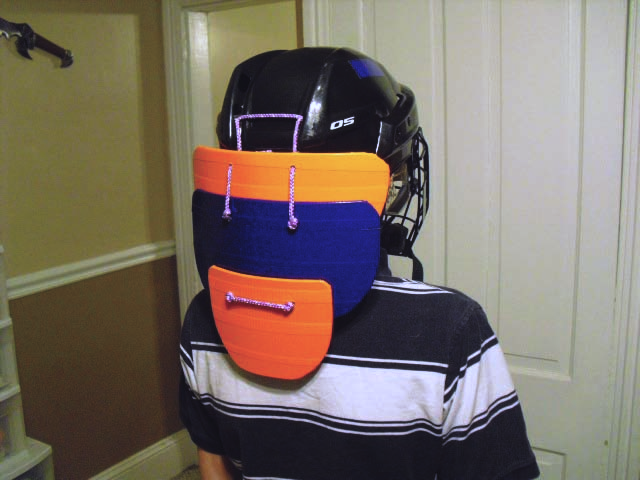This guide to building an aventail to protect the base of the skull and back of the neck using pieces cut from a plastic barrel was written in March 2011 by Jaekel and Shamus of the East Kingdom’s Barony of Bhakail.
It is also available in PDF format.
In this guide we will be making an aventail from barrel plastic for use in SCA Youth Combat as per East Kingdom standards. This method is useful in modifying helmets to add critical neck/spine protection.
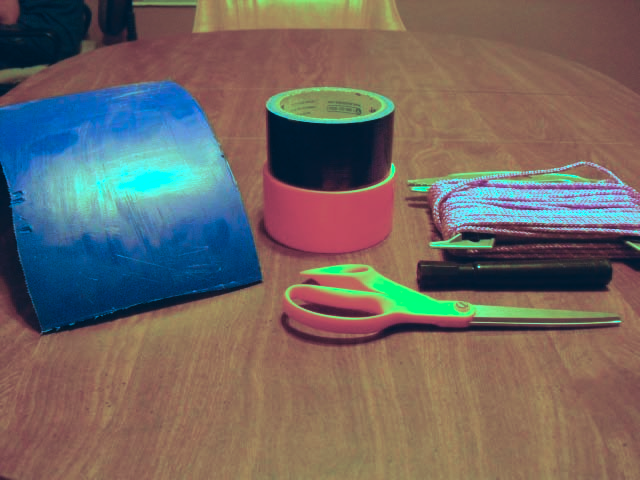
What you will need
Materials (pictured above):
a) Barrel plastic
b) Duck tape
c) Scissors
d) Cord
e) Marker or Pen
Additional Tools:
f) Saw
g) Drill
h) Template patterns from the PDF version of this guide
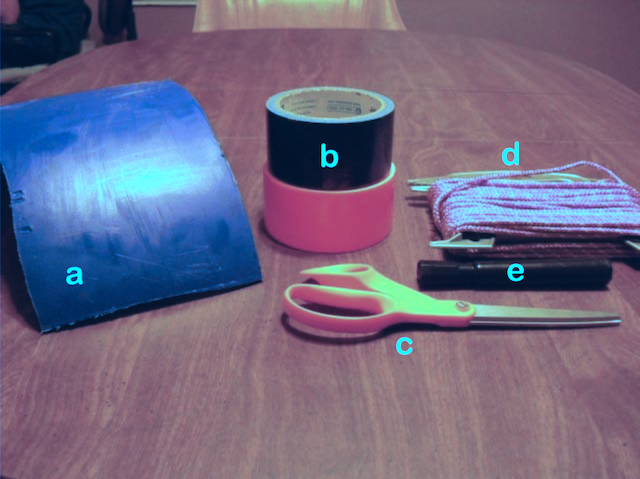
Cut and smooth the plastic armor plates
We start our aventail by using templates to mark the barrel plastic for cutting. I have included a set of templates at the end of this manual for you to use that are the same size of those shown in the pictures of this guide. Note that you can cut apart the template pieces along the dotted lines as a way of making the armor plates larger or smaller as you desire.
Using whatever method of choice/availability you may have at your disposal, cut out the pieces of aventail armor plating and smooth the sharp edges by either filing and/or sanding them.
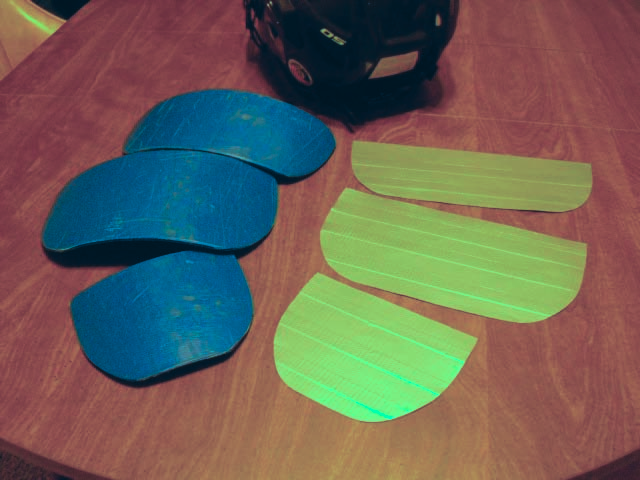
Bend and shape the plastic armor plates
You now need to heat and shape the plastic armor plates into tighter curves that will fit around the back of the helmet properly. There are 3 popular methods for accomplishing this that I have come across:
- Use a heat gun and gloves to shape the plastic.
- On a cookie sheet covered with aluminum foil, place the plastic plates in an oven at 250 degrees for 5 to 10 minutes. Bend the plastic into shape and hold in place using gloves for a minute (or, as I like to do, use duck tape as pictured above).
- On a cookie sheet covered with aluminum foil, place the plastic plates in an oven at 300 degrees for 5 minutes. Bend the plastic into shape and hold in place using gloves while quenching the plastic in a sink of cool water.
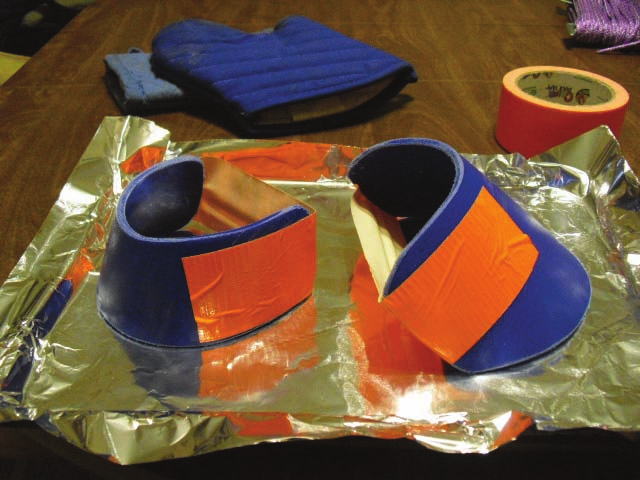
Drill holes
Now that our plastic aventail armor plates are in the desired shape, it’s time to drill the holes for the cording. This is a lot less problematic to do now rather than after the plates are covered in duck tape.
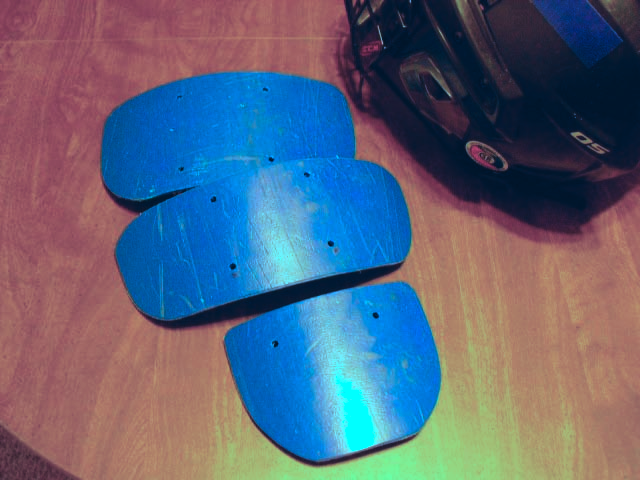
Duck tape
Use duck tape to completely cover the plastic aventail armor plates as shown. A nail or similar tool can then be used to poke through the duck tape over the holes we drilled earlier.
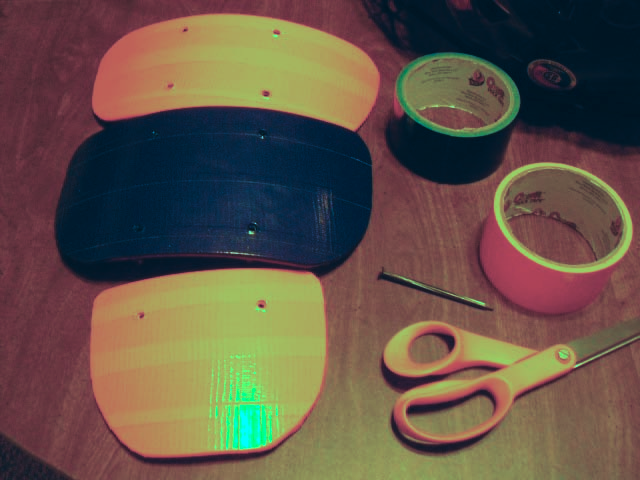
Lace and complete the aventail
Using a good sturdy cord (I prefer poly cord since it is strong, will not rot or mildew, and leather seems to snap all to easily after a few hits), thread the pieces of the aventail together and attach it to the back of the helmet as shown.
With an aventail’s protection in place, this helmet now meets the SCA East Kingdom safety requirement of providing protection to the upper Cervical Vertebrae.
